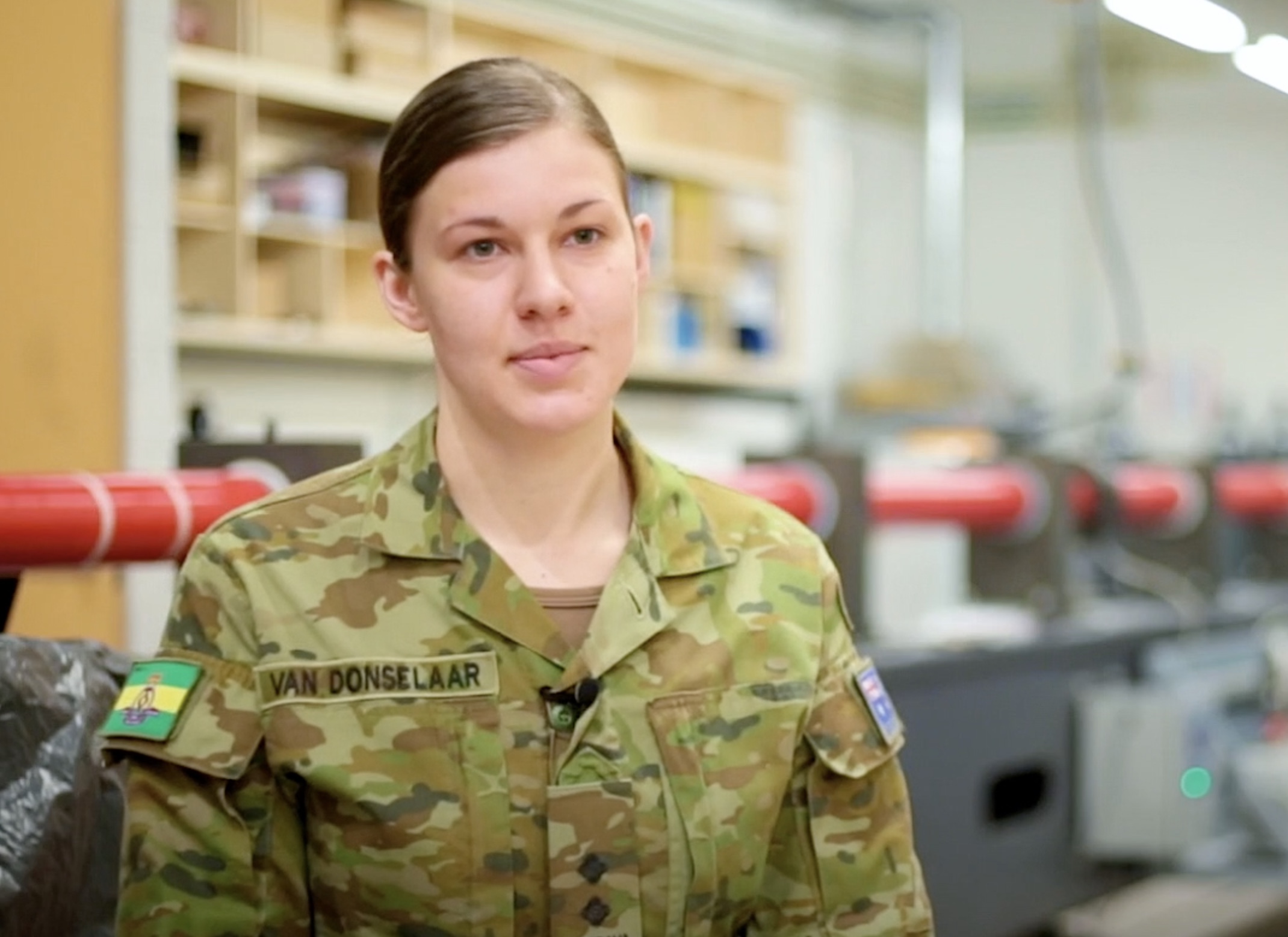My thesis: Leone Van Donselaar
UNSW Canberra’s Impact Dynamics Lab provides a unique space for engineers to develop protective gear for the Australian Defence Force.
UNSW Canberra’s Impact Dynamics Lab provides a unique space for engineers to develop protective gear for the Australian Defence Force.

UNSW Canberra’s Impact Dynamics Lab provides a unique space for engineers to develop protective gear for the Australian Defence Force.
Many of the University’s engineering students are using their final year to contribute to this research.
Civil engineering student and Australian Army Trainee Officer Leone Van Donselaar has been working with ceramic armour systems and auxetic structures.
Her thesis topic, An Auxetically Engineered Ceramic Armour System, discussed how ceramic pieces could be incorporated into armoured vehicles.
“I first looked at auxetic structures,” Leone said.
“These are structures that when compressed in one direction they are compressed in all directions. When they’re stretched in one direction they are stretched in all directions, which is different to most materials.”

An example of an auxetic structure
“I then looked at how I could insert ceramic pieces into an auxetic structure, and then have it dynamically compressed during impact.”
Leone completed experimental testing with the University’s gas gun to see how the auxetic structure would behave under fragmentation impact.
“We used a fragmentation simulating projectile to achieve that and then I did the simulations with ceramic to see if it would be feasible to integrate ceramic pieces within the structure,” Leone said.
Leone’s experiment expands on the work done by a previous fourth year engineering student and 2018 graduate, Teresa Lin.
“Teresa’s topic was related to pre-stressed ceramics,” Leone said.
“It looked at how pre-stressing the ceramic actually improves the ballistic performance of ceramic.
“My thesis was to try to find a cheaper, more effective way of doing that during the impact event rather spending a lot of time and money beforehand to achieve that pre-stress.”
Leone’s simulations show that when ceramics are integrated into these auxetic structures, they are compressed during the impact event, negating the need to pre-stress the material.
She explained that the next step will be to test how the ceramic reacts outside of a simulation – this is where another student will be able to continue this line of research.
“I wasn’t able to do that with this experimental testing and it will be interesting to see how that actually works.”
Leone said once the technology has been developed, it could be used to protect vehicles from large projectiles.
“It might not work as well against things like small arms fire, but against those larger projectiles it will have a better effect and be better able to protect those vehicles,” she said.
Related stories